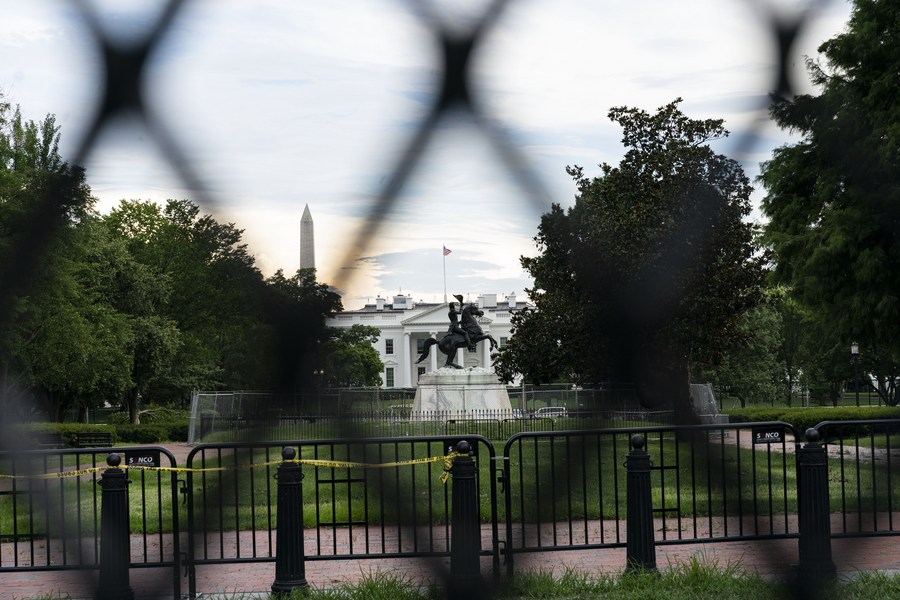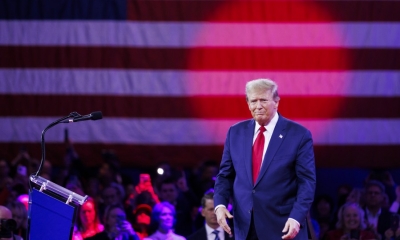Washington’s War Drums

The international system is inexorably moving toward more multipolarity, polycentrism and pluralism. Washington is out of step with the trend of the times and must opt for productive diplomacy over destructive war policy.
Is Washington planning war with China over Taiwan? Hysteria is building across Washington as ruling circles fear the loss of the United States’ global hegemony. The Pentagon is laser-focused on China and the State Department is not far behind.
Delusional voices are piling onto America’s drumbeat for war against China. They are added to the strident calls for war with Russia over Ukraine. This paranoid Washington cacophony while bizarre to normal people around the world seems to be the new normal in the U.S.
Let’s review.
Taiwan is part of China’s territory. After a brief occupation by Dutch colonists since 1624, General Zheng Chenggong recovered the island in 1661. Following China’s defeat in the 1894-95 Sino-Japanese War, the island came under Japanese occupation. The Chinese government resumed the exercise of sovereignty over Taiwan after the victory in the Chinese People’s War of Resistance Against Japanese Aggression in 1945. In 1949, Kuomintang forces led by Chiang
Kai-shek fled to the island after losing a civil war with the Communist Party of China.
The U.S. accepted the one-China principle in the 1972 Shanghai Communiqué which states in plain English: “…there is but one China and that Taiwan is part of China.” On January 1, 1979, the U.S.—under President Jimmy Carter—switched diplomatic recognition from the Taiwan-based regime to the Beijing-based government of the People’s Republic of China. Congress passed the Taiwan Relations Act which does not recognize the former regime. Under President Ronald Reagan, then, the U.S. in its Six Assurances stated explicitly in the fifth that it would not recognize Taiwan as an independent country.

Washington’s rising cold war
Despite the fact that Taiwan is part of China, the hawkish chorus in Washington appears to believe it has magically become something of a state. The argument is that the U.S. must defend that something under all circumstances. Various scenarios about a Chinese “attack” on the island, China’s own island, are the buzz in D.C. today.
There are various American military responses posited for such a Chinese “attack” on its own territory. They are bandied about by all manner of civilian and military pundits. Think tanks funded by the military-industrial complex, not to mention by Taiwan, are breathlessly dreaming up various scenarios and policy options.
The basic idea seems to be that a U.S. military response should give China a “bloody nose,” deterring it from more mischief as perceived by Washington.
The reasoning is that the U.S. must prevent China from becoming a “regional hegemon.” This is because China might be able to amass more global economic power than the U.S., hawks say. In this case, the American future “would be in grave peril.” These hawks argue that the U.S. would ultimately lose its freedom and overall way of life in a world in which China exerts substantial influence, particularly economic power.
Meanwhile, of course, other voices say the U.S. must remain the global hegemon so as to “lead” the “democratic” world against the “autocratic” world. Sound familiar? Of course it does. It is a rehash of the Cold War’s “Free World versus Communist World” bi-polar bloc politics.

U.S. hawks call for war
Whether arguing for war from a “power politics” perspective or from a “human rights” interventionist perspective, the conclusion is the same. The U.S. must go to war with China to defend Taiwan, hawks say.
If this sounds delusional that is because it is delusional. Various war games conducted in the U.S. with Taiwan at the center are said to conclude that the U.S. would lose any war with China over Taiwan. But this does not deter the hawks, some of whom even admit the U.S. would lose. They say, however, that giving China a “bloody nose” is worth it.
Coupled with the bloody nose argument is the argument about the American “credibility.” Hawks using this argument say that the U.S. must go to war over Taiwan because this will ensure its “credibility” in the eyes of regional allies. The U.S. has to engage in a policy of strategic denial against China to deny the latter the ability to be a regional hegemon.
The idea here is that China becoming a regional hegemon will result in the breakup of the Cold War-era U.S.-Asian alliance structure. This is the so-called “hub and spokes” structure with the U.S. as the hub and the various allies and partners as the spokes. The latter are such countries as Japan, the Republic of Korea, the Philippines, Australia and New Zealand.
The premise here is that such alliance structures are not obsolete Cold War relics, but rather are in the current American national interest. The argument here is that a “coalition” of states led by the U.S. will “balance” against China.
The general idea touted in Washington is that such an alliance will strengthen the American position against China and thus regional security in the Asia-Pacific region. If war does break out, then Washington will have allies to follow its lead.

Washington’s mania explained
A reader getting this far may wonder just what is in the mindset of official Washington? One answer is that the coalition war against China is nothing new. In fact, it was the basis of Barack Obama’s Pivot to Asia foreign policy—also known as “Rebalancing.”
The idea of forging a global partnership of “democracies” versus “autocracies” arose during a major U.S. establishment review and update of the country’s foreign policy in the mid-2000s. From this general geopolitical perspective, the formation of a coalition in the Asia-Pacific region against China (and Russia) took shape. Consequently, the U.S.-Japan-India-Australia “Quad” alignment, the AUKUS alliance consisting of Australia, the UK and the U.S., and the likes were set into motion by Washington.
The “Rebalancing” continued under the Donald Trump administration and since the beginning of this year has remained unchanged under Joe Biden. This continuity of the American policy and elitist geopolitical perspective is not well perceived. It was a mistake to assume Biden would shift U.S. policy toward a more moderate direction. He served as vice president under Obama, after all, so what else should one expect him to do?
What’s next?
It’s not clear whether Washington will come to its senses and moderate its foreign policy. Aggressive speech presently dominates the tone of voice and just what it would take to encourage a less delusional and more realistic perspective is hard to say. Clearly, China, as well as Russia, has been put in a position that requires a measure of pushback.
A major question is the American capacity to conduct serious and effective diplomacy. The U.S. has been at war uninterruptedly for two decades. Given how things stand, one might argue that the Pentagon in effect took over foreign policy management from the State Department. Ergo, the driving force behind U.S. foreign policy for 20 years has been military coercion.
Armed intimidation is not a substitute for diplomacy. Under normal circumstances, mediation between heads of state at key summits can set the stage for constructive communication and the adjustment of differences through diplomacy. But the American side has not demonstrated the slightest hint of a helpful attitude in the encounters between the U.S. president and the leaders of China and Russia.
Washington must gain a realistic perspective on a changing global landscape that bears the hopes for peace and development. The international system is inexorably moving toward more multipolarity, polycentrism and pluralism. Washington is out of step with the trend of the times and must opt for productive diplomacy over destructive war policy.
 Facebook
Facebook
 Twitter
Twitter
 Linkedin
Linkedin
 Google +
Google +







